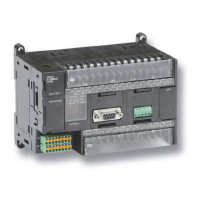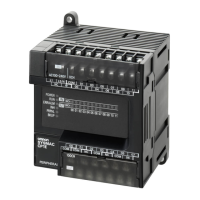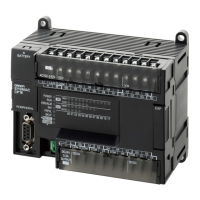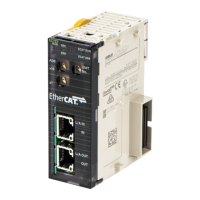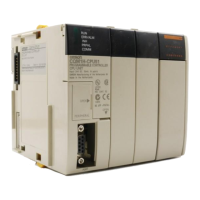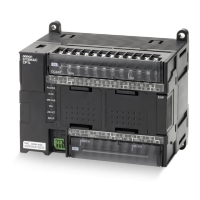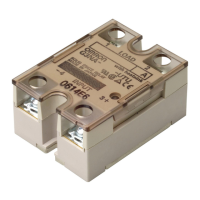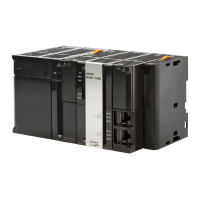370
Serial Communications Section 6-3
Procedure
Message Frame Formats Data can be placed between a start code and end code for transmission by
TXD(236) and data between a start code and end code can be received by
RXD(235). When transmitting with TXD(236), data from I/O memory is trans-
mitted, and when receiving with RXD(235), the data (without start/end codes)
is stored in I/O memory. Up to 256 bytes (including the start and end codes)
can be transferred in no-protocol mode.
The start and end codes are set in the PLC Setup.
The following table shows the message formats that can be set for transmis-
sions and receptions in no-protocol mode.
• When more than one start code is used, the first start code will be effec-
tive.
• When more than one end code is used, the first end code will be effective.
• If the data being transferred contains the end code, the data transfer will
be stopped midway. In this case, change the end code to CR+LF.
Set the PLC Setup from the CX-
Programmer.
(Set the communications mode to
RS-232C
and set the parameters.)
Power OFF
Connect the CPU Unit and external device through
RS-232C or RS-485. (Mounting the RS-232C or
RS-422A/485 Option Board in option slot 1 or 2.
Set the DIP switch on the front of
the CPU Unit.
Turn OFF pin 4 to use serial port 1.
Turn OFF pin 5 to use serial port 2.
Note Serial port 2 is not supported by CPU
Units with 20/14 I/O points.
Serial port 1 and 2 are not supported
by CPU Units with 10 I/O points.
Power ON
PLC → External device
External device → PLC
Execute TXD(236).
Execute RXD(235).
Start code End code
No Yes CR+LF
No
Ye s
data
256 b
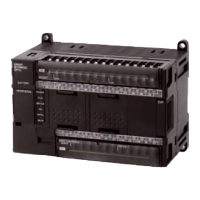
